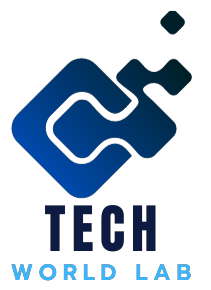How to Turn On Developer Mode in Chatbot
Enabling developer mode for a chatbot depends on the specific chatbot development platform or framework you are using. Here are some general steps that can help guide you in enabling developer mode:
-
Facebook Messenger Chatbots:
- In the Facebook Developer Portal, navigate to your app’s dashboard.
- Select the chatbot you want to work on or create a new one if needed.
- Under the “Messenger” settings for your chatbot, look for options related to developer mode or testing.
- Enable developer mode to access and test your chatbot during development without making it public. Also read the Article: What is YouTube Automation
-
Slack Chatbots:
- For Slack apps and chatbots, visit your Slack app’s settings.
- Explore the settings related to the developer or testing mode.
- Typically, you can enable developer mode to interact with your chatbot within your Slack workspace during development.
-
Dialogflow (Google):
- In Dialogflow, you can create and test chatbots within the Dialogflow console without deploying them.
- There’s no specific “developer mode” to enable; simply build and test your chatbot within the console until you’re ready to deploy it to a live environment.
-
Microsoft Bot Framework (Azure Bot Service):
- When using the Microsoft Bot Framework within Azure, you can develop, test, and debug your chatbot without deploying it to public channels.
- There isn’t typically a specific “developer mode” to enable; you can work on your bot’s code and functionality until you’re ready to publish it.
-
Custom Chatbot Development:
- If you’re developing a chatbot from scratch using a programming language and framework, you have full control over the development process.
- Developer mode essentially means working on your code and testing it locally or in a controlled environment before deploying it to a live chat platform.
Also read the Article: Apple Watch GPS vs Cellular
-
Third-Party Chatbot Development Platforms:
- For other chatbot development platforms or frameworks, consult their documentation and settings to understand how to enable developer or test mode specific to that platform.
Enabling developer mode allows you to test and refine your chatbot’s functionality without it being accessible to the general public. Once you’ve thoroughly tested and debugged your chatbot, you can follow the platform-specific steps to deploy it to the intended messaging channels for public use.
Why Use Developer Mode in Chatbots
Enabling Developer Mode offers several advantages:
- Customization: Developers can create highly tailored responses.
- Testing: It allows thorough testing to identify and rectify issues.
- Enhanced Functionality: Access to APIs and integrations for added functionality.
- Real-time Debugging: Developers can identify and fix errors on the go.
Accessing the Chatbot Platform
To begin, log in to your chatbot platform’s dashboard. If you don’t have one, consider popular platforms like Dialogflow, Watson Assistant, or Chatfuel.
Navigating to Settings
Once logged in, navigate to your chatbot platform’s “Settings” or “Configuration” section. This is where you’ll find the option to enable Developer Mode.
Enabling Developer Mode
Look for the “Developer Mode” or “Advanced Settings” tab within the “Settings” section. Toggle the switch to enable Developer Mode. Depending on the platform, you may need to save your settings.
Testing Your Chatbot
After enabling Developer Mode, it’s time to test your chatbot. Start a conversation and observe how it responds. You can make real-time adjustments to improve its performance.
Advanced Customizations
In Developer Mode, you can explore advanced customizations such as:
- Scripting: Writing custom scripts for specific interactions.
- Integrations: Connecting your chatbot to external services.
- APIs: Accessing and utilizing APIs for extended functionality.
Troubleshooting Tips
If you encounter issues, check:
- Logs: Review chat logs for errors or unexpected behavior.
- Integrations: Ensure third-party integrations are configured correctly.
- Syntax: Check your code for syntax errors or typos.
Security Considerations
While in Developer Mode, be mindful of security. Avoid exposing sensitive data and limit access to authorized personnel only.
Developer Mode Best Practices
- Regularly back up your chatbot’s configurations.
- Document changes and updates for reference.
- Test thoroughly in Developer Mode before deploying.
- Stay updated with the latest platform features.
Conclusion
Enabling Developer Mode in your chatbot empowers you to create a more efficient and personalized user experience. It’s a crucial step for developers aiming to fine-tune their chatbots and ensure they provide optimal value to users.
FAQs
Is Developer Mode available on all chatbot platforms?
Developer Mode availability depends on the platform. Check with your chosen platform’s documentation.
Can I switch off Developer Mode once it’s enabled?
Yes, you can usually toggle Developer Mode on and off as needed.
Are there any additional costs associated with Developer Mode?
Some platforms may charge extra for access to advanced features like Developer Mode. Check with your platform provider for details.
Is Developer Mode suitable for beginners in chatbot development?
Developer Mode is more suited for experienced developers comfortable with coding and customizations.
How often should I test my chatbot in Developer Mode?
It’s a good practice to test your chatbot regularly, especially after making significant changes.
